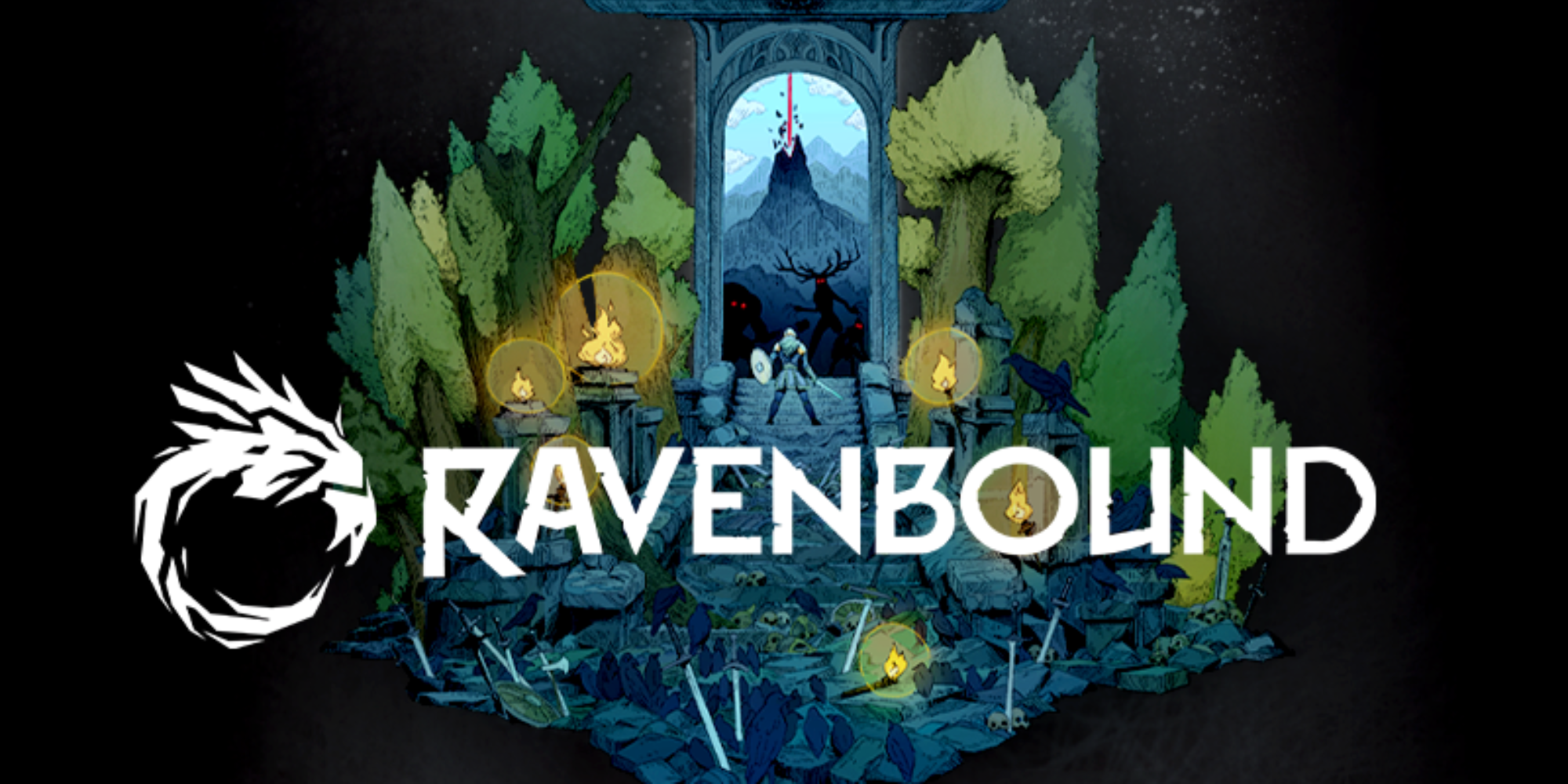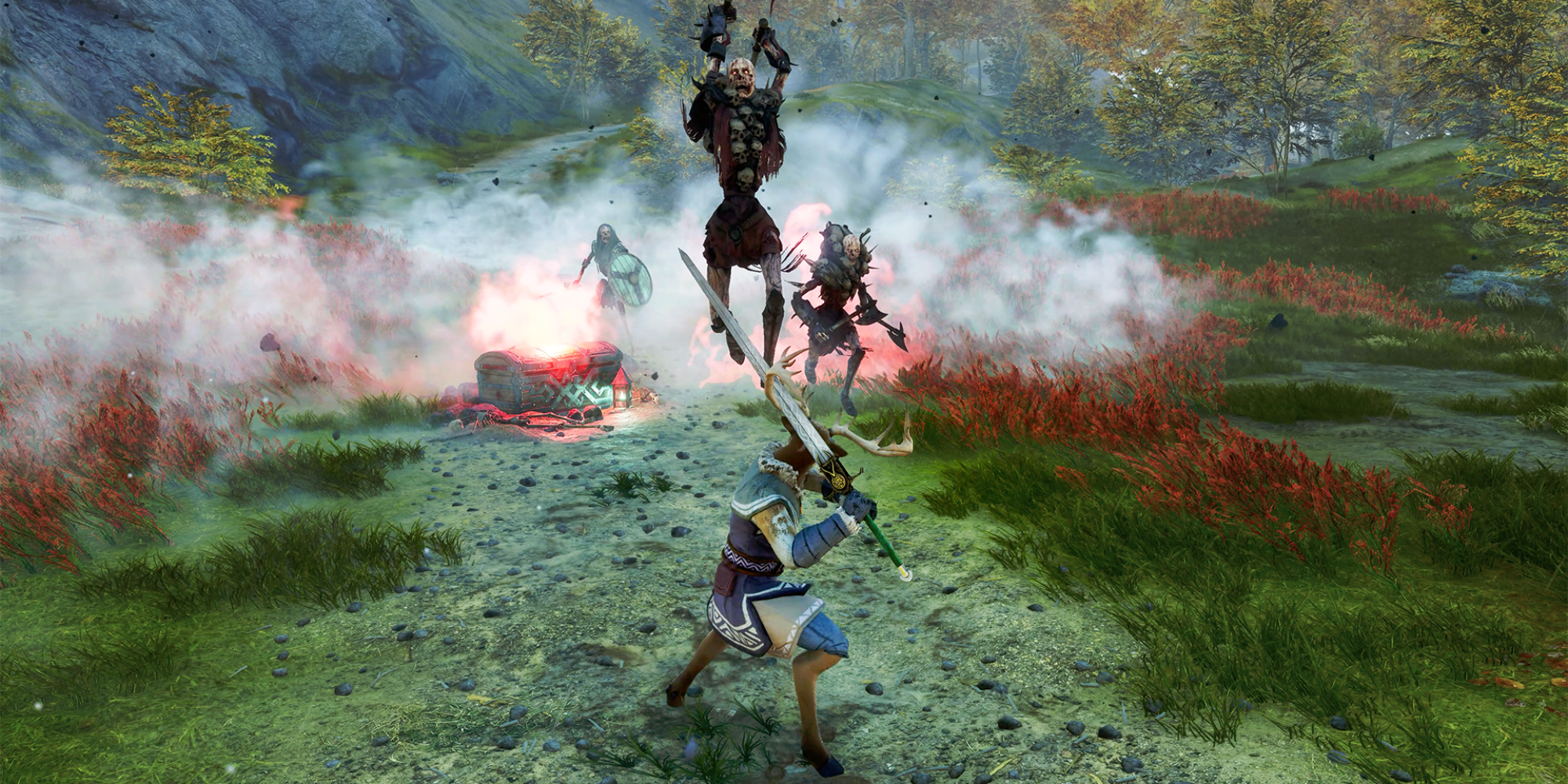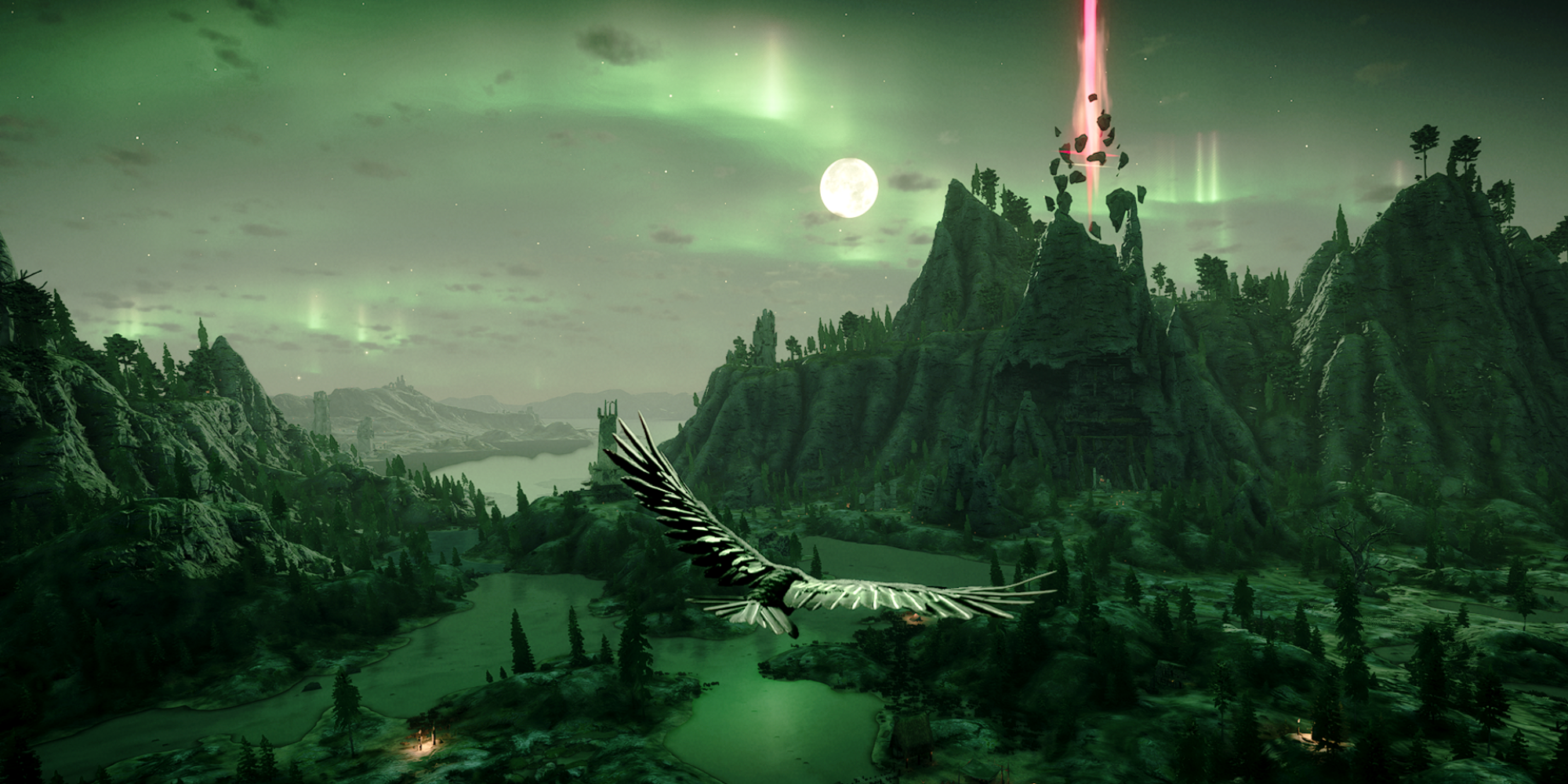Ravenbound is an open-world, deckbuilder roguelike developed by Systemic Reaction, the same team behind the dinosaur killing team-shooter, Second Extinction. In contrast, Ravenbound is a single-player experience that drops players into the fantasy world of Ávalt, a land inspired by Norse folklore (but not Norse mythology). It was once protected by six gods, called the “Ellri,” until one of them, aptly named “The Betrayer,” became corrupted. Prior to being sealed by the Betrayer, the remaining Ellri created the Raven to find a vessel strong enough to defeat the Betrayer and cleanse the land of its. Despite its promising set-up and engaging first hour, Ravenbound loses steam and presents an empty world and a gameplay loop that is repetitive, flawed, and unbalanced.
The game begins with players being assigned a human vessel and walked through a surprisingly fun tutorial that does a good job of covering the main things players need to know in a short amount of time. It starts with combat which, like Shadow of War, puts an emphasis on fluidity and impact. Players have access to light and heavy attacks, a sliding dodge that gives a damage boost when perfectly timed, and a guard that parries enemies and provides brief invulnerability when perfectly timed. Players are then introduced to mystical stones called fragments, which are dropped by strong enemies. After collecting three of them, players can “empower” the fragments to acquire cards that provide everything from weapons and armor, to upgrades and abilities.
Using cards costs mana, which is gained by getting a card that provides mana or by cleansing “Tears” from Hatred; this game’s version of Malice from The Legend of Zelda series. These Tears are the first main quest marker when entering the open world, and players navigate to it by shifting the vessel’s raven form which is essential for crossing the vast distance. After shifting back, players must defeat a few enemies to cleanse the Hatred, then collect their fragments and the mana from the Tear to acquire their starting buffs. However, the moments after this reveal the game’s various flaws.
After cleansing, players can make their way to the side-quest location, which is in a village filled with vendors and a few NPCs. The side-quest always centers around defeating some enemies for money but once it’s completed, that’s it for side-quests in that run. Not only does it make the side-quest feel useless, but it’s also the only way to get coins outside a card that provides them. Depending on how the battle goes, players may lose a good chunk of health and the only way to heal without cards is to buy health from the potion vendor for 50 coins, which is about half of the reward. Even worse, some vendors have items that cost up to 1,000 coins, which is impossible without good card RNG; however, this is plagued by the same problem.
The RNG could be great as far as healing or armor goes, but it means nothing without mana cards. Like coins, mana is only provided by cards or tears, which puts players in a situation where the best option is hoarding healing cards since they will be the most useful when mana can finally be acquired. This could be easily avoided by allowing enemies to drop mana and coins upon death, but that isn’t the case. Combat only serves to get players enough fragments to meet the empowerment required for the (thankfully) hard boss fights. Fighting any more than what’s necessary is a pointless endeavor, especially when enemy encounters are curated pockets of the open world and are often quite easy.
All of these things result in an experience that is tedious, unrewarding, and it leads to a waste of an aesthetically beautiful open-world by giving players no reason to explore it as there’s nothing to gain by doing so. Other mechanics like the risk/reward Hatred chests attempt to vary things, but it’s painfully easy to use them without suffering any consequences. Ravenbound is a game that should be fun and addicting, but poor optimization and design decisions have had the exact opposite effect.
Ravenbound is available now for PC via Steam and NVIDIA GeForce NOW. Screen Rant was provided with a Steam download for the purpose of this review.



